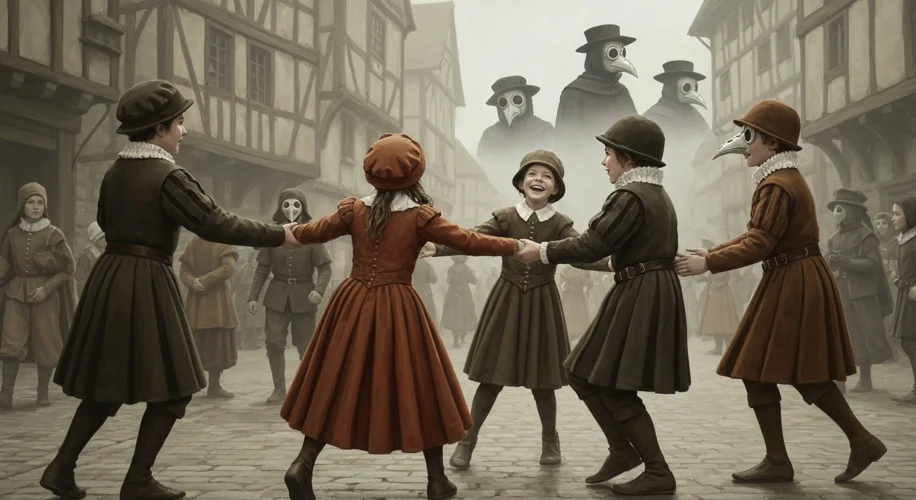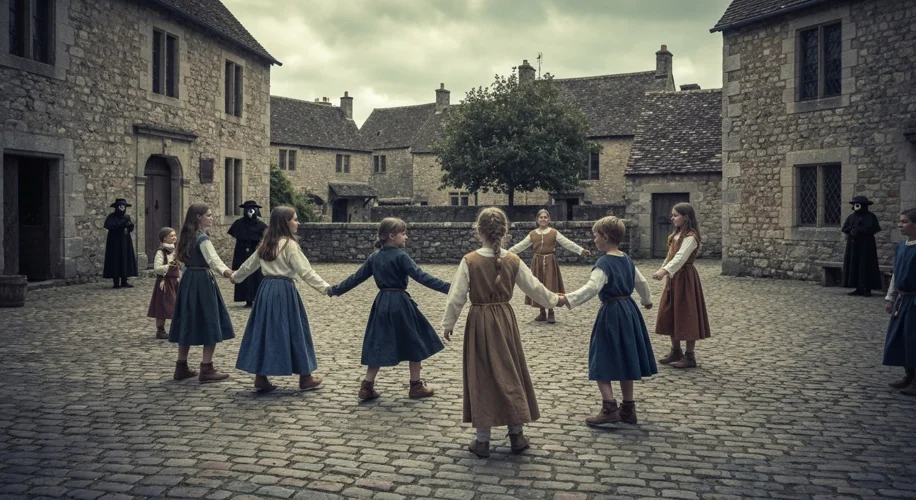The cheerful, circular dance and the chilling words of ‘Ring Around the Rosie’ – “Ring-a-ring o’ roses, A pocket full of posies, A-tishoo! A-tishoo! We all fall down.” This seemingly innocent nursery rhyme, a staple for generations of children, harbors a darker, more debated origin story. For centuries, a compelling theory has linked its verses to the devastating Black Death, the bubonic plague that swept across Europe in the 14th century, leaving a trail of death and despair. But is this grim interpretation fact or folklore?
Let us journey back to the mid-14th century, a time when Europe was a very different place. The Black Death arrived in 1347, carried on trading ships from the East. It was an invisible enemy, a terrifying wave of disease that spared no one, from the peasant in the field to the king on his throne. The symptoms were horrific: painful swellings, or buboes, in the groin, armpits, or neck, often turning black, hence the name. Fever, vomiting, diarrhea, and a swift, agonizing death followed. The sheer scale of mortality was unprecedented, wiping out an estimated 30-60% of Europe’s population.
Against this backdrop of fear and suffering, the playful rhyme is said to have emerged. The “ring o’ roses” could refer to the red, inflamed rash that often accompanied the plague. The “pocket full of posies” were believed by some to ward off the disease; people carried fragrant herbs and flowers, like lavender, rosemary, and cloves, hoping their strong scents would purify the air and repel the pestilence. The “A-tishoo! A-tishoo!” captures the sneezing, a common symptom of the pneumonic form of plague, which spread through respiratory droplets. And “We all fall down”? A grim, literal description of the inevitable demise that befell so many.

This interpretation, popularized in the 20th century, paints a vivid, albeit grim, picture. It suggests that this seemingly innocent game was a morbid memorial, a way for children to process the terrifying reality of their world. The collective falling down was a symbolic representation of the mass graves and the widespread death.
However, as with many folk traditions, the path from origin to popular understanding is winding and often fraught with uncertainty. Many folklorists and historians cast doubt on the plague theory. Their primary argument rests on the lack of concrete evidence directly linking the rhyme to the Black Death. The earliest documented versions of ‘Ring Around the Rosie’ only appear in the late 18th century, long after the major plague outbreaks.
For instance, a version recorded in 1790 in

